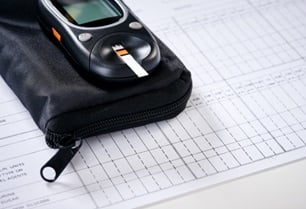
If your pet was recently diagnosed with diabetes, you may be worried about how their life will change. What does a diabetic pet’s typical day look like? The good news is that a diabetic pet can live a very normal and active life, but there will need to be a few key adjustments to help keep them healthy.
Meals: Nutrition is very important for a diabetic pet. In addition to feeding them portion-controlled meals at the same time each day, you’ll also need to monitor how much your pet eats. If your pet eats less than their normal amount of food, your VCA veterinarian may recommend decreasing their next insulin dose to prevent low blood sugar.
Insulin injections: Giving injections to your pet is a skill that becomes easy with practice. Your veterinarian will teach you how to perform this vital treatment, and make sure you and your pet are comfortable with the process. Most diabetic pets will need insulin injections twice a day for the rest of their lives. But don’t worry, it’s a very straightforward process and most pets don’t even feel it since the needle is very small!
Daily exercise: A daily exercise routine is important for weight loss, cardiovascular health and blood-sugar regulation. The amount of exercise your pet needs will depend on several factors, but a good rule of thumb is to aim for about an hour of low-impact activity daily. This can include fun activities like walks, swimming or playing with a favorite toy!
Blood glucose monitoring: Most diabetic pets don’t need their blood sugar checked every day, but your veterinarian will let you know what’s recommended for your pet. Blood sugar tests may include a blood glucose curve, during which you drop your pet off at the hospital and their blood sugar is checked every two hours. Some veterinarians also recommend clients to check their pet’s blood sugar at home in certain circumstances.
Most importantly, you’ll need to keep a close eye on your pet’s diabetes symptoms. This is the best way to determine whether your pet’s blood sugar is well controlled.
Symptoms like increased frequency and volume of urination, lethargy, increased appetite and weight loss are all signs that it’s time for a check-up with your veterinarian. Consider keeping a journal of your pet’s day, so you’ll be able to quickly spot and address changes with your veterinarian.
Find insulin and other veterinarian-approved diabetes care products on Shop myVCA >>